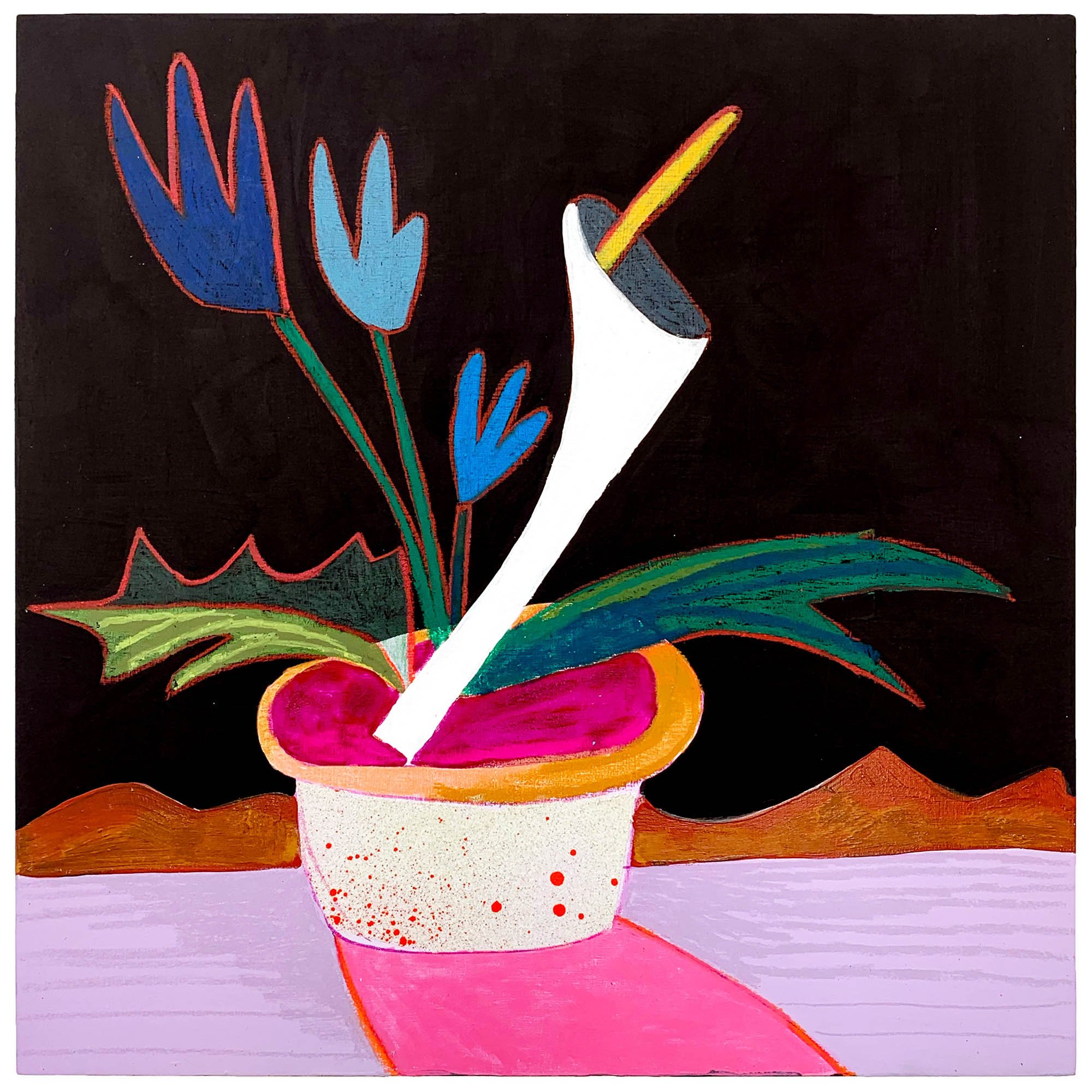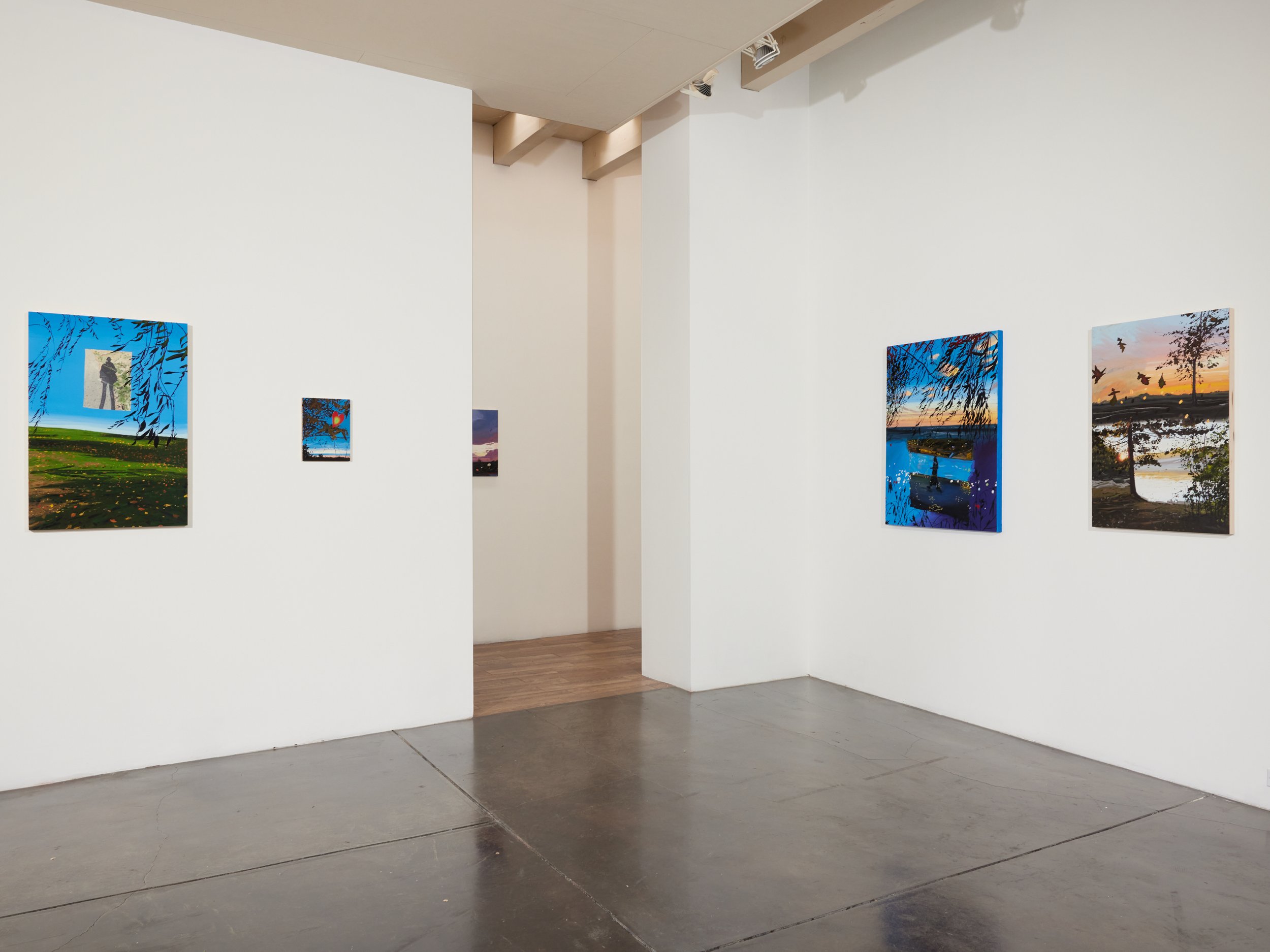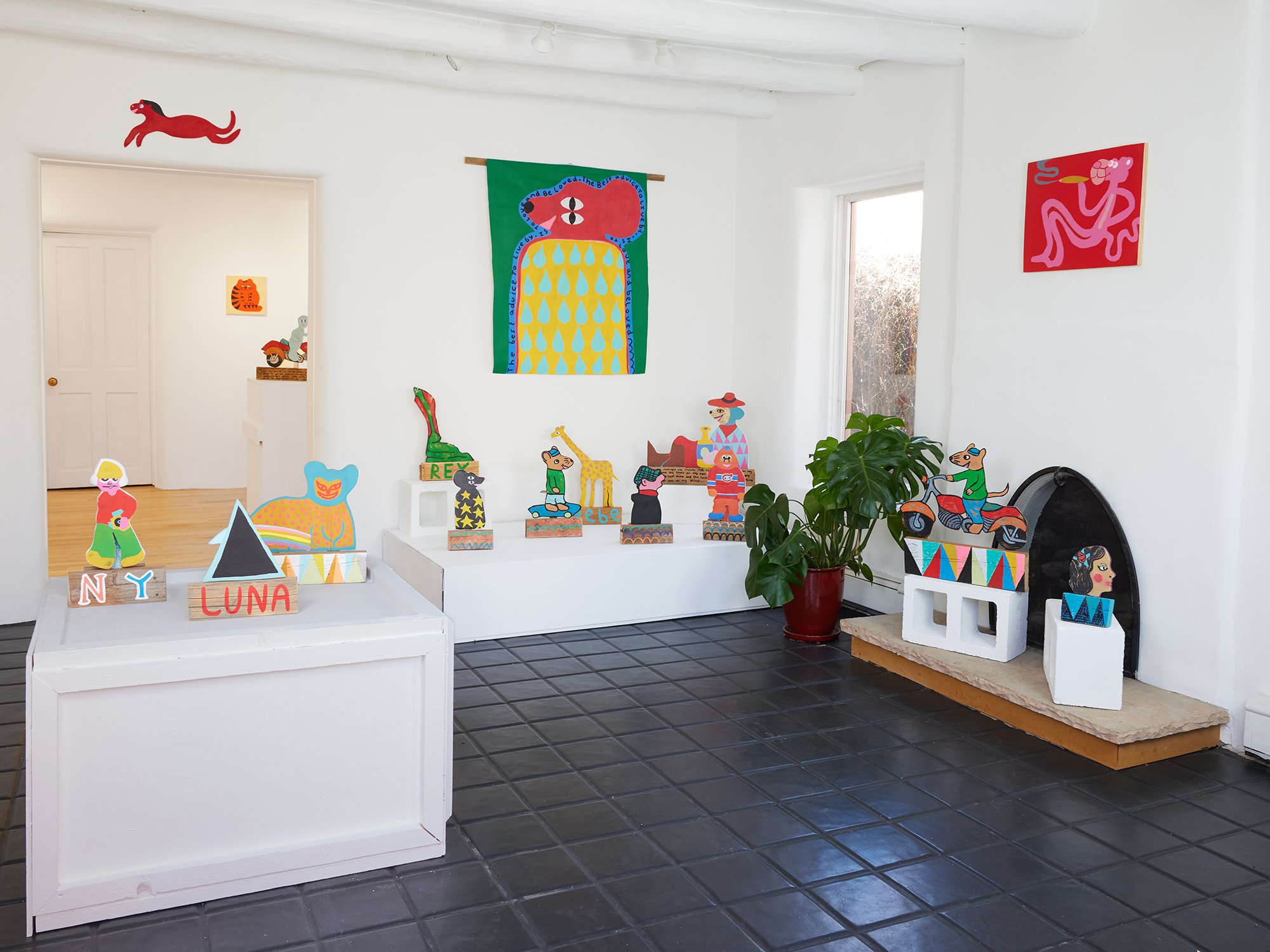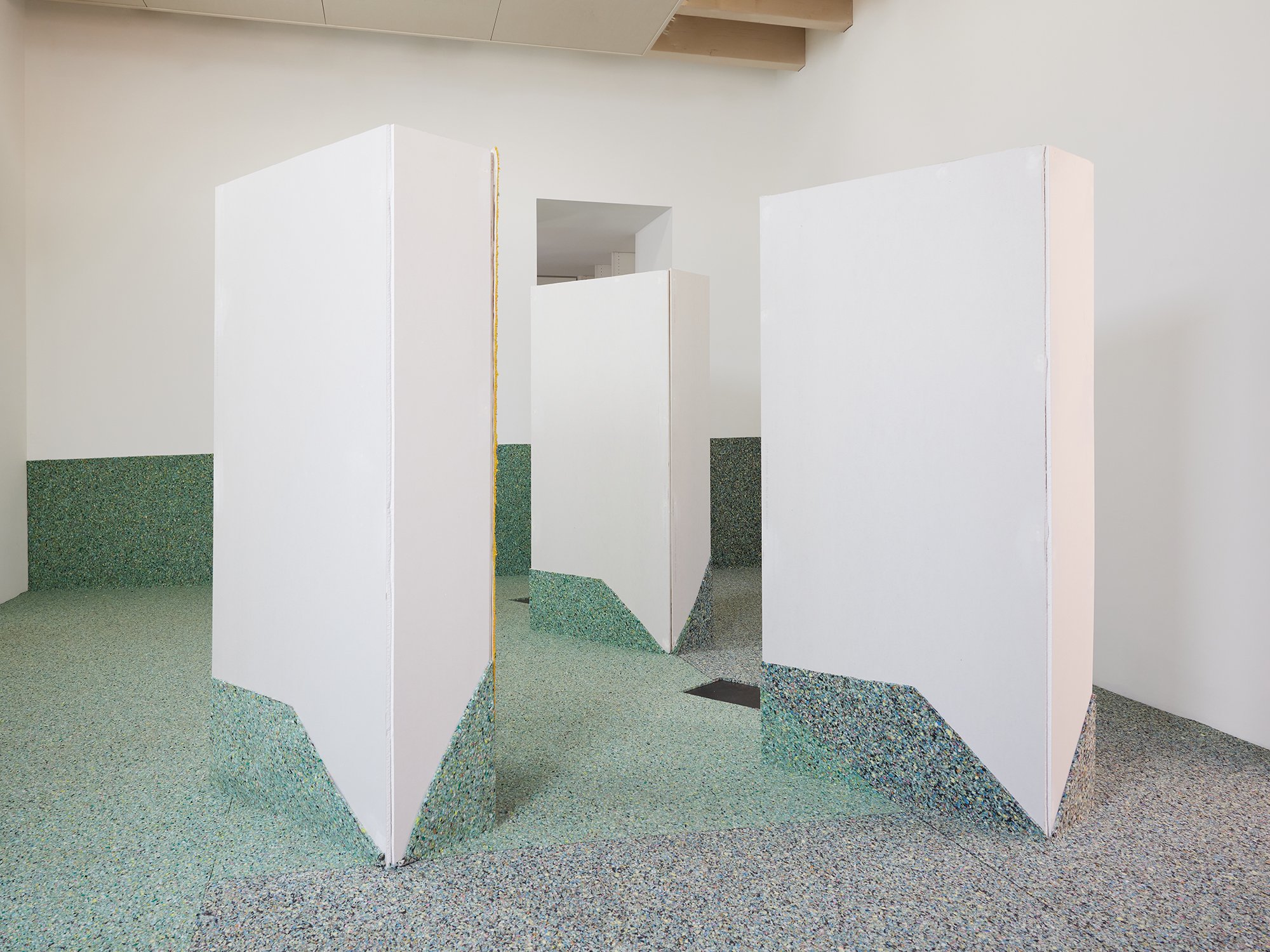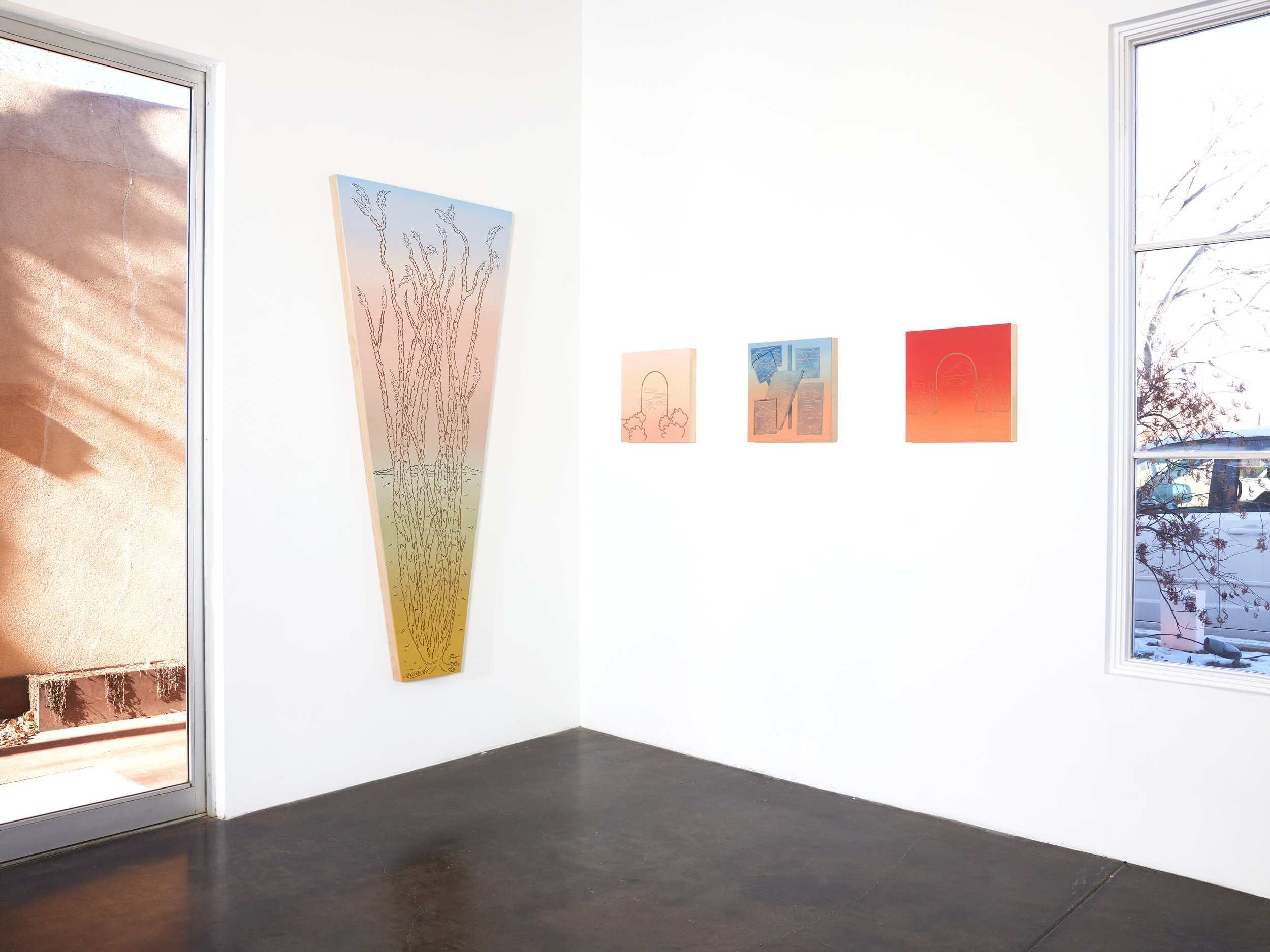
Lugares Tranquilos: Alberto Regueira, Miguel A. Machado, Yudel Francisco Cruz
February 7 - March 16, 2025

Live On Air: debut solo exhibition of paintings by Zac Brenner
February 7 - March 16, 2025



The Pull: debut solo exhibition of paintings by Jessica Palermo
September 27 - November 3, 2024

When The Earth Was Young: a group show curated by Marcus Xavier Chormicle and Diego Medina
August 16 - September 22, 2024

REDHORN: new work by Chaz John











smoke the moon proudly presents REDHORN, a solo show by multidisciplinary artist Chaz John. Chaz John (Winnebago Tribe of Nebraska / Mississippi Band Choctaw) will present a series of bronze cast sculptures and multimedia wall hanging works throughout the main gallery space. Utilizing naturalistic and utilitarian materials, John will activate the whole gallery space with a collaged language of objects and their hosts. REDHORN will open with a reception on Friday, August 16th from 6 - 8pm. The show will be on view from August 16 to September 22, 2024.
What remains of a body? What remains of a city?
Investigating both a historical imaginary and speculative future to recontextualize our current moment, John is adorning the mythic with his own idiosyncratic collection of figures and images. This show emerges from John’s extensive research of the ancient city of Cahokia — the largest pre-Columbian city north of Mexico. Cahokia was megalithic — once the most prominent and influential urban settlement of Missisippian culture. Centuries before colonial imposition, Mississippian culture advanced complex social forms and structures across much of what is now the Central and Southeastern United States.
Heralding the rise and fall of Cahokia, a star exploded, creating a huge celestial event. A supernova appeared as a radiant object in the sky, bright enough to be visible throughout all hours of the day and lasting over a year. This cosmic happening is thought to have brought with it a paradigmatic cultural shift and is linked to the legend of Morning Star. Various plains tribes abide by the story of Morning Star—across multiple indigenous legends the figure of Morning Star is depicted as a celestial being that emerged during the creation of the cosmos. Sometimes associated with the planet Venus, Morning Star is believed to have been created by divine force. Some tribes hold the Morning Star to be the first star to shine in the sky, heralding the dawn and with it the turning of a new day. Given that the Morning Star represents both a deity and an astral figure, REDHORN posits that celestial events at the end of the 11th century propelled Morning Star to sudden theological prominence.
A recent recipient of a Creative Capital award, Chaz John works from story to story. He uses the materials of his extensive research to dictate the material conditions of the work he produces. Mississippians were one of the few of their time that tooled copper and explored metallurgy. This show uses materials that are of the earth and extrapolations of materials that were in use during the Cahokian period. The work in REDHORN was produced while John worked in the foundry at the Institute of American Indian Art. The foundry is an inherently collective space: it requires the labor of a group to produce one object, a stark reminder of the social nature of objects and art.
Earthen materials gesture toward both a past and future in the show—moving through time with their own energetic and mythic aura. REDHORN will debut a suite of bronze sculptures: shells and charred wood and a sun’s face appear gilded, suspended in time and bronze. Pouring molten bronze in and through pieces of wood, John created negative casts of charred bark and tree branches, immortalizing their particularities. Walnut framed concrete relief works scaffold the walls—copper etchings of neo-tribal tattoo flash intermingling with Missisipian patterning.
Dreams speak in images. They leave their ghost image in symbols for the host body or bodies to decipher. Chaz John has penned an open map of this dream language; his overlapping reference points and temporal jumps creating a trickster’s elegy. Humor sits beside reckoning in John’s work, encouraging an emotional connection to the work that precedes logic. Mark making is a way to delineate time in REDHORN. The artist’s commanding symbology renders a moment or ambient memory as greater than the sum of its parts, illuminating the truth of what remains. Throughout the show there is a protective energy: a cosmos of sigils and alloys intermingling to form something entirely new. Future, past and present collide in John’s work, becoming spiralic hosts of one another.






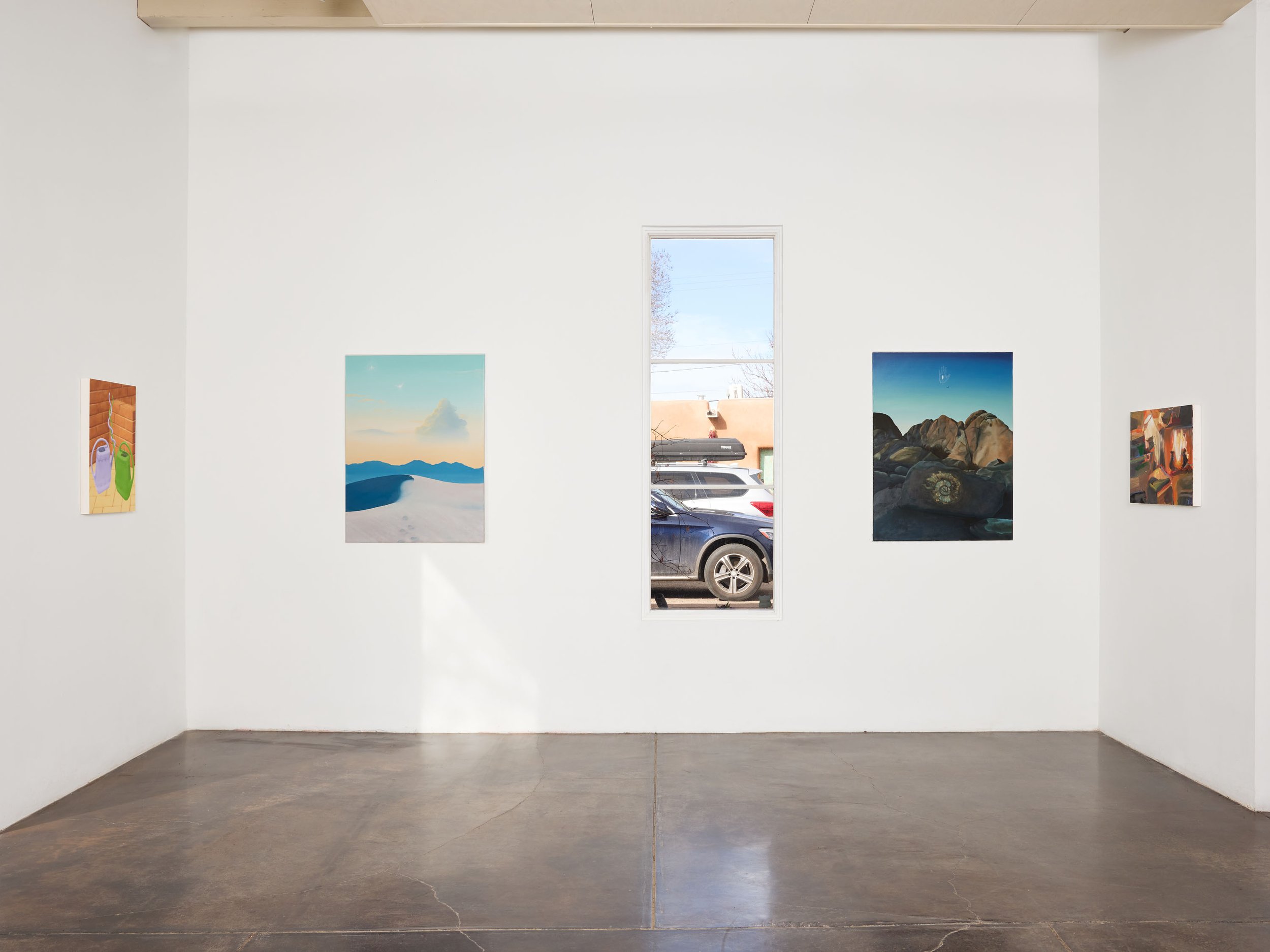

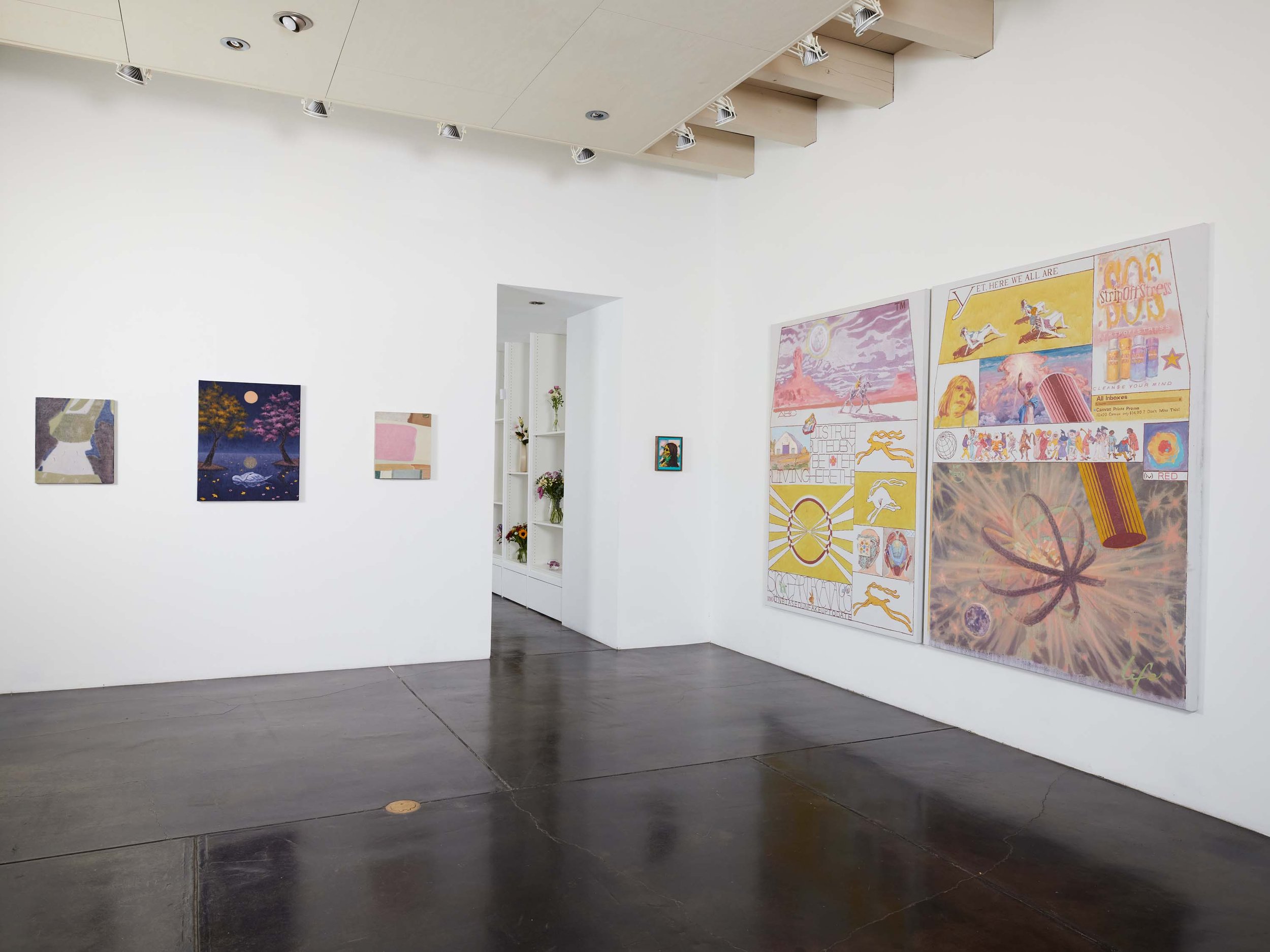
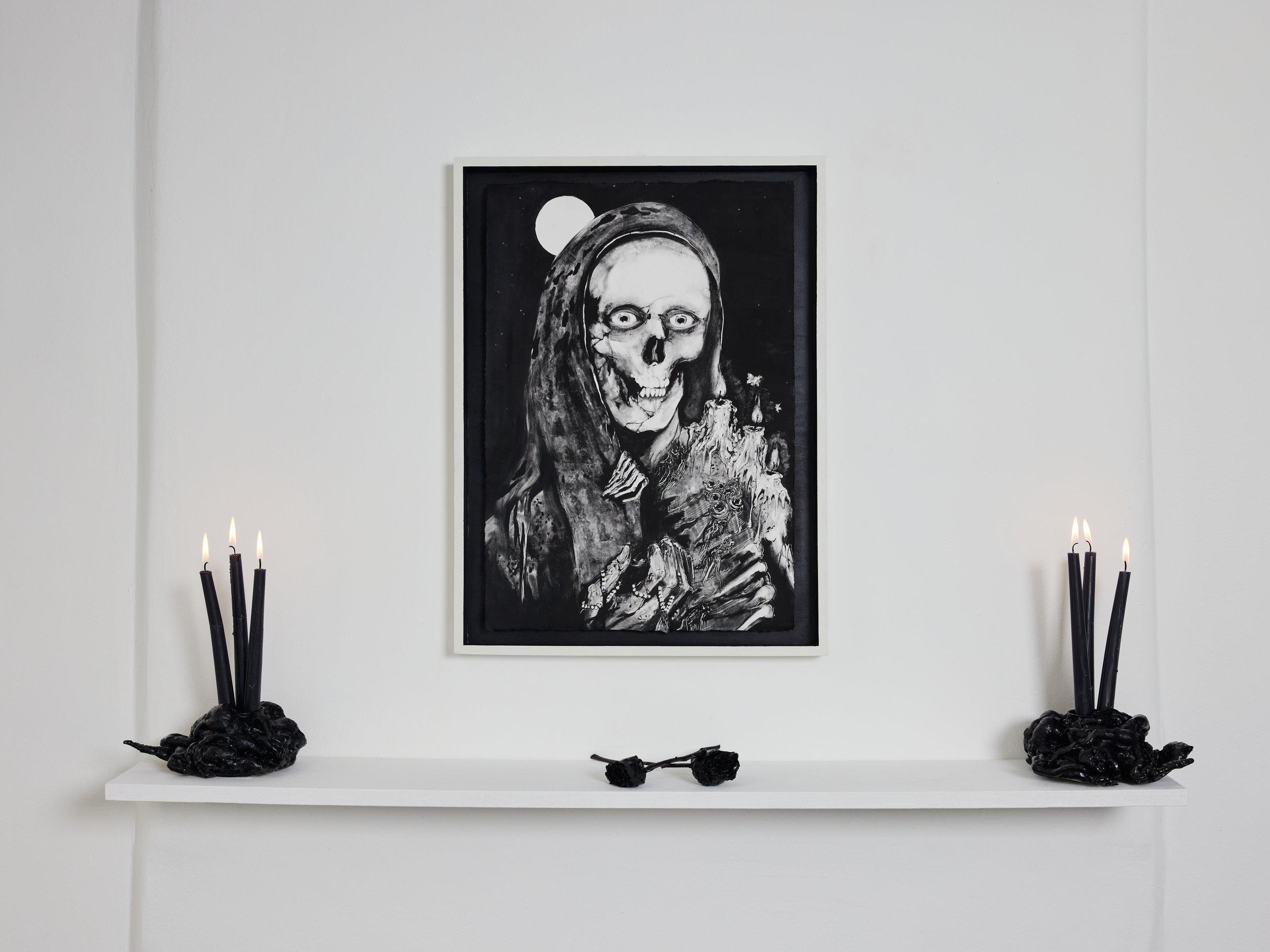
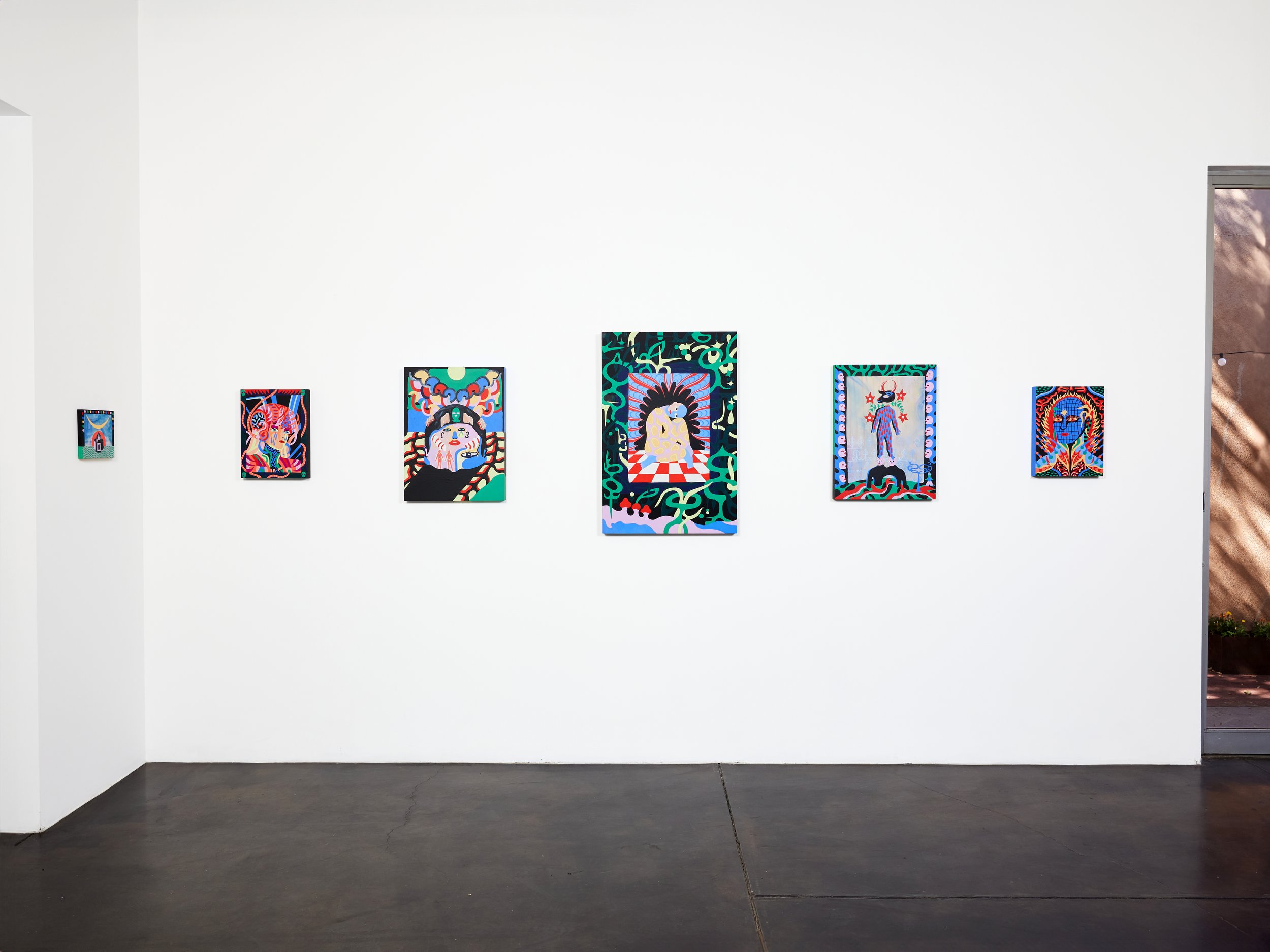

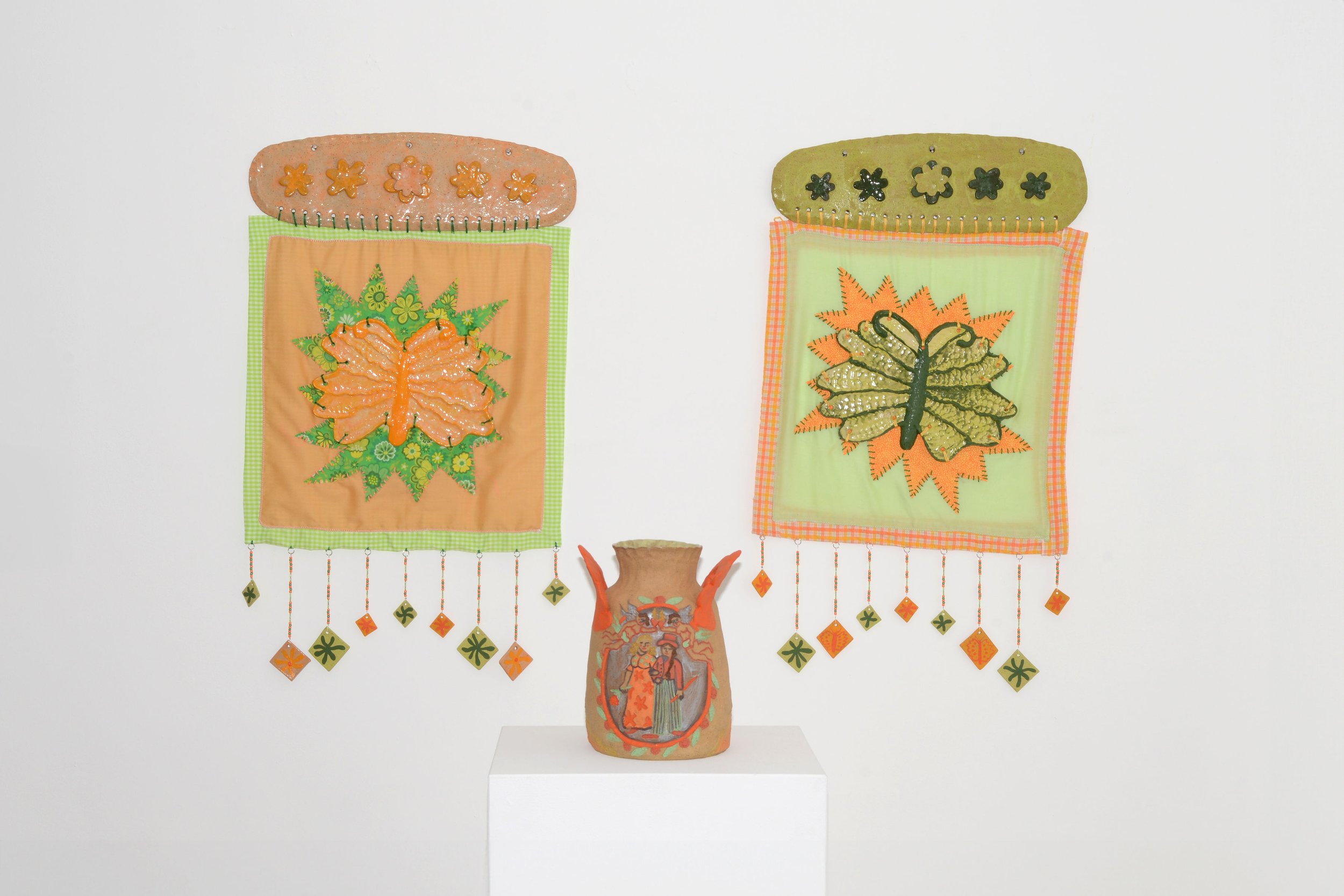
Garden Gnome: Protector of My Heart | new work by Lindz Redd
August 25 - October 1, 2023

